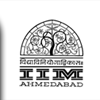3. The Food and Drug Administration has formulated certain severe restrictions regarding the use of antibiotics, which are used to promote the health and growth of meat animals. Though the different types of medicines mixed with the fodder of the animals kills many microorganisms, it also encourages the appearance of bacterial strains, which are resistant to anti-infective drugs.
It has already been observed that penicillin and the tetracyclines are not as effective therapeutically as they once used to be. This resistance to drugs is chiefly caused due to tiny circlets of genes, called plasmids, which are transferable between different species of bacteria. These plasmids are also one of the two kinds of vehicles on which molecular biologists depend on while performing gene transplant experiments. Existing guidelines also forbid the use of plasmids, which bear genes for resistance to antibiotics, in the laboratories. Though congressional dabate goes on as to whether these restrictions need to be toughened with reference to scientists in their laboratories, almost no congressional attention is being paid to an ill advised agricultural practice, which produces deleterious effects.
[i] In the present passage, the author's primary concern is with:
(a) The discovery of methods, which eliminate harmful microorganisms without generating drug-resistant bacteria.
(b) Attempting an explanation of the reasons for congressional inaction about the regulation of gene transplant experiments.
(c) Portraying a problematic agricultural practice and its serious genetic consequences
(d) The verification of the therapeutic ineffectiveness of anti-infective drugs
(e) Evaluation of the recently proposed restrictions, which are intended to promote the growth of meat animals.
Ans : (c)
|
[ii] As inferred from the above passage, the mutual transfer of plasmids between different bacteria can result in which of the following?
(a) Microorganisms, which have an in-built resistance to drugs
(b) Therapeutically useful circlets of genes
(c) Penicillin like anti-infective drugs
(d) Viruses used by molecular biologists
(e) Carriers for performing gene transplant experiments.
Ans : (a)
|
[iii] According to the above passage the author believes that those who favor the stiffening of restrictions on gene transplant research should logically also.
(a) Approve and aid experiments with any plasmids except those, which bear genes for antibiotic resistance.
(b) Inquire regarding the addition of anti-infective drugs to livestock feeds
(c) Oppose the using of penicillin and tetracyclines in order to kill microorganisms
(d) Agree to the development of meatier live-stock through the use of antibiotics
(e) Approve of congressional debate and discussion regarding science and health issues.
Ans : (b)
|
[iv] The attitude the author has with reference to the development of bacterial strains that render antibiotic drugs in effective can best be described as
(a) indifferent
(b) perplexed
(c) pretentious
(d) insincere
(e) apprehensive
Ans : (e)
|
4. Some modern anthropologists hold that biological evolution has shaped not only human morphology but also human behavior. The role those anthropologists ascribe to evolution is not of dictating the details of human behavior but one of imposing constraints - ways of feeling, thinking, and acting that ''come naturally'' in archetypal situations in any culture. Our ''frailties'' - emotions and motivs such as rage, fear, greed, gluttony, joy,lust, love-may be a very mixed assortment quality: we are, as we say, ''in the grip'' of them. And thus they give us oursense of constraints.
Unhappily, some of those frailties our need for ever-increasing security among them are presently maladaptive. Yet beneath the overlay of cultural detail, they, too, are said to be biological in direction, and therefore as natural to us as are our appendixes. We would need to comprehend throughly their adaptive origins in order to understand how badly they guide us now. And we might then begin to resist their pressure.
[i] The author implies that control to any extent over the ''frailties'' that constrain our behavior is though to presuppose
(a) That those frailties and adaptive are recognized as currently beneficial and adaptive
(b) That there is little or no overlay of cultural detail that masks their true nature.
(c) That there are cultures in which those frailties do not ''come naturally'' and from which such control can be learned
(d) A full understanding of why those frailties evolved and of how they function now
(e) A thorough grasp of the principle that cultural detail in human behavior can differ arbitrarily from society to society.
Ans : (d)
|
[ii] It can be inferred that in his discussion of maladaptive frailties the author assumes that
(a) Evolution does not favor the emergence of adaptive characteristics over the emergence of maladaptive ones
(b) Any structure or behavior not positively adaptive is regarded as transitory in evolutionary theory
(c) Maladaptive characteristics, once fixed, make the emergence of other maladaptive characteristics more likely
(d) The designation of a characteristic as being maladaptive must always remain highly tentative
(e) Changes in the total human environment can outpace evolutionary change.
Ans : (e)
|
[iii] The primary purpose of the passage is to present
(a) A position on the foundations of human behavior and on what those foundations imply
(b) A theory outlining the parallel development of human morphology and of human behavior
(c) A diagnostic test for separating biologically determined behavior patters from culture - specific detail
(d) An overview of those human emotions and motive's that impose constraints on human behaviour
(e) A practical method for resting the pressures of biologically determined drives.
Ans : (a)
|
[iv] Which of the following most probably provides an appropriate analogy from human morphology for the ''details'' versus ''constraints'' distinction made in the passage in relation to human behaviour?
(a) The ability of most people to see all the colors of the visible spectrum as against most peoples inability to name any but the primary colors
(b) The ability of even the least fortunate people to show compassion as against people's inability to mask their feelings completely
(c) The ability of some people to dive to great depths as against most people's inability to swim long distance
(d) The psychological profile of those people who are able to delay gratification as against people's inability to control their lives completely
(e) The greater lung capacity of mountain peoples that helps them live in oxygen-poor air as against people's inability to fly without special apparatus.
Ans : (e)
|
|


 Print
Print









